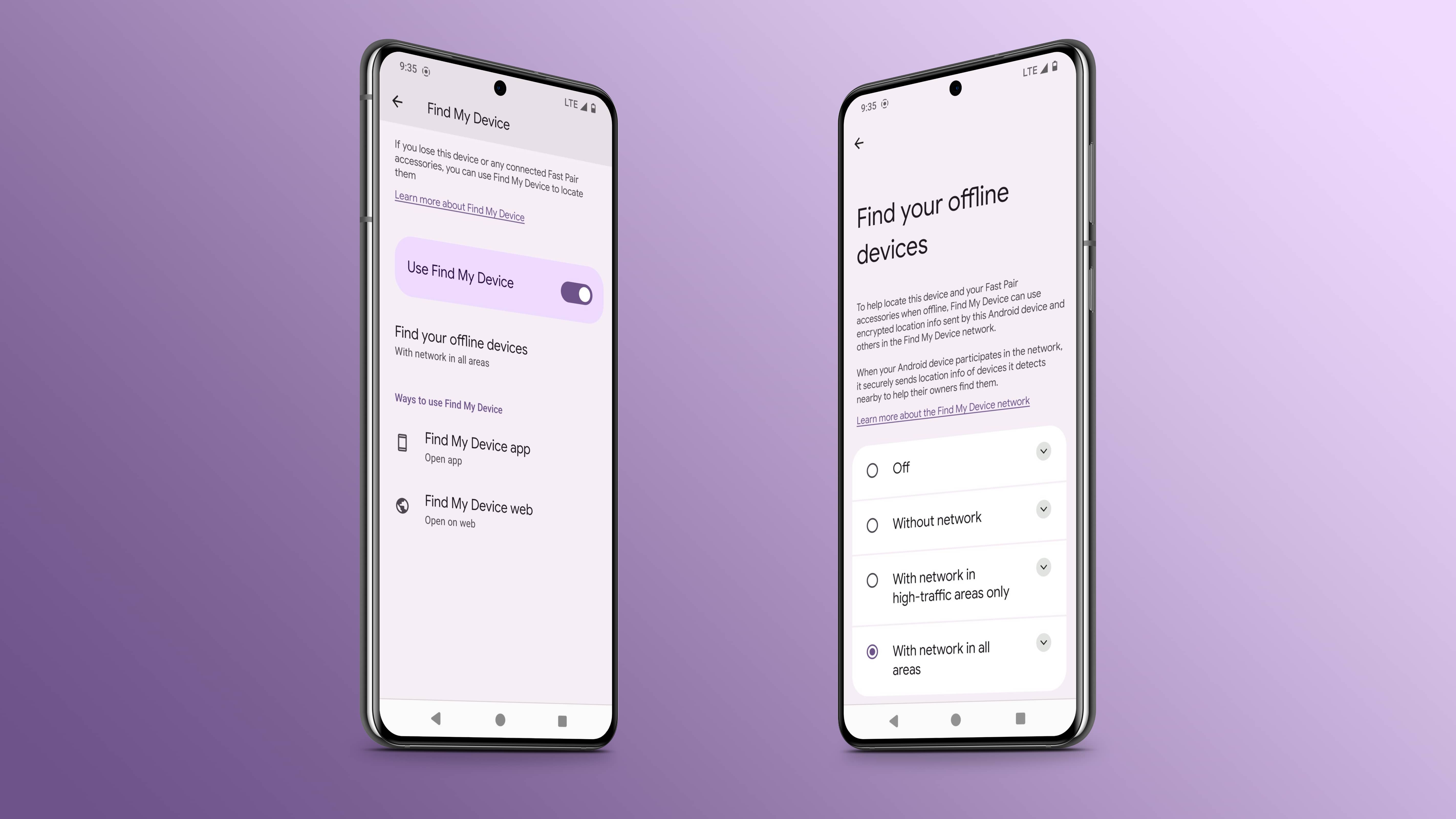Google emailed some users that its Apple-friendly Find My Devices network is now online, lettingthem find compatible offline devices and Fast Pair accesories.

The email states the feature is coming to select users “in three days,” 9to5Google reported, meaning either on Sunday, April 7, or Monday, April 8. The full rollout is expected to happen when iOS 17.5 launches to the public in early May.
Now, Android users locate compatible devices even when they’re offline via google.com/android/find or the official Google Find My Device app.
How to manage Find My Devices on Android
The Find My Devices network seems to be turned on by default for those who got Google’s email blast. Android users can manage the feature and opt out in Settings > Google > All Services > Find My Device. On Pixel phones, the path is Settings > Security & privacy > Device finders > Find My Device.

You can turn off the feature or restrict location reporting to “in all areas” or “high-traffic areas only,” like airports and busy footpaths.
There’s also a privacy-first “Without network” setting. Like Apple, this ensures the user can locate their Andorid device even if it’s offline and doesn’t participate in the Find My Devices network. However, there’s a catch: Only the device’s last known location when it was online is visible on the map.
- Without network: “Your device won’t participate in the network. You can still locate your offline devices using their stored recent locations when they were online.”
- With network in high-traffic areas only: “Locate using stored recent locations or the network in areas like airports or busy footpaths. To help find a lost item, location info from your device is used only if others in the network also detect the item.”
- With the network in all areas: “Locate using stored recent locations or the network even in low-traffic areas. To help find a lost item, location info from just your device may be used if it’s the only one in the network to detect the item.”
Google’s Find My Devices network also works with compatible Android’s Fast Pair accessories though some may require a firmware update to implement this functionality. Samsung, Tile, Chipolo, eufy Security and Pebblebee pledged to participate in the Apple’s and Google’s Find My networks.
How Apple’s and Google’s Find My networks work
Like Apple’s Find My network, Google’s version also processes low-power Bluetooth signals from the billions of iPhones and Android devices with Google Play Services.
The system permits participating devices to report not only their own location to the network but also the locations of nearby devices within Bluetooth range.
Any iPhone or Android handset can detect a nearby device, even if it lacks an internet connection, and broadcast its encrypted location to the network.
Apple and Google join forces to stop stalking via trackers
In 2023, Apple and Google began co-developing an interoperability standard to prevent malicious uses of personal item trackers like Apple’s AirTag. That thing gave the whole product category a bad reputation following reports of malicious uses, such as jealous husbands using AirTags to track their wives.
The companies agreed on an interoperability solution that would be built deep into the bowels of their respective operating systems. Apple even launched the free Tracker Detect Android app to prevent unwanted tracking via AirTags.
With iOS 17.5, the company has expanded the “Found Moving With You” alerts to third-party trackers, including those used with Android. And now, Google is rolling out its own Find My Devices network so Android users will know if someone is stalking them with AirTag or a similar tracking device.